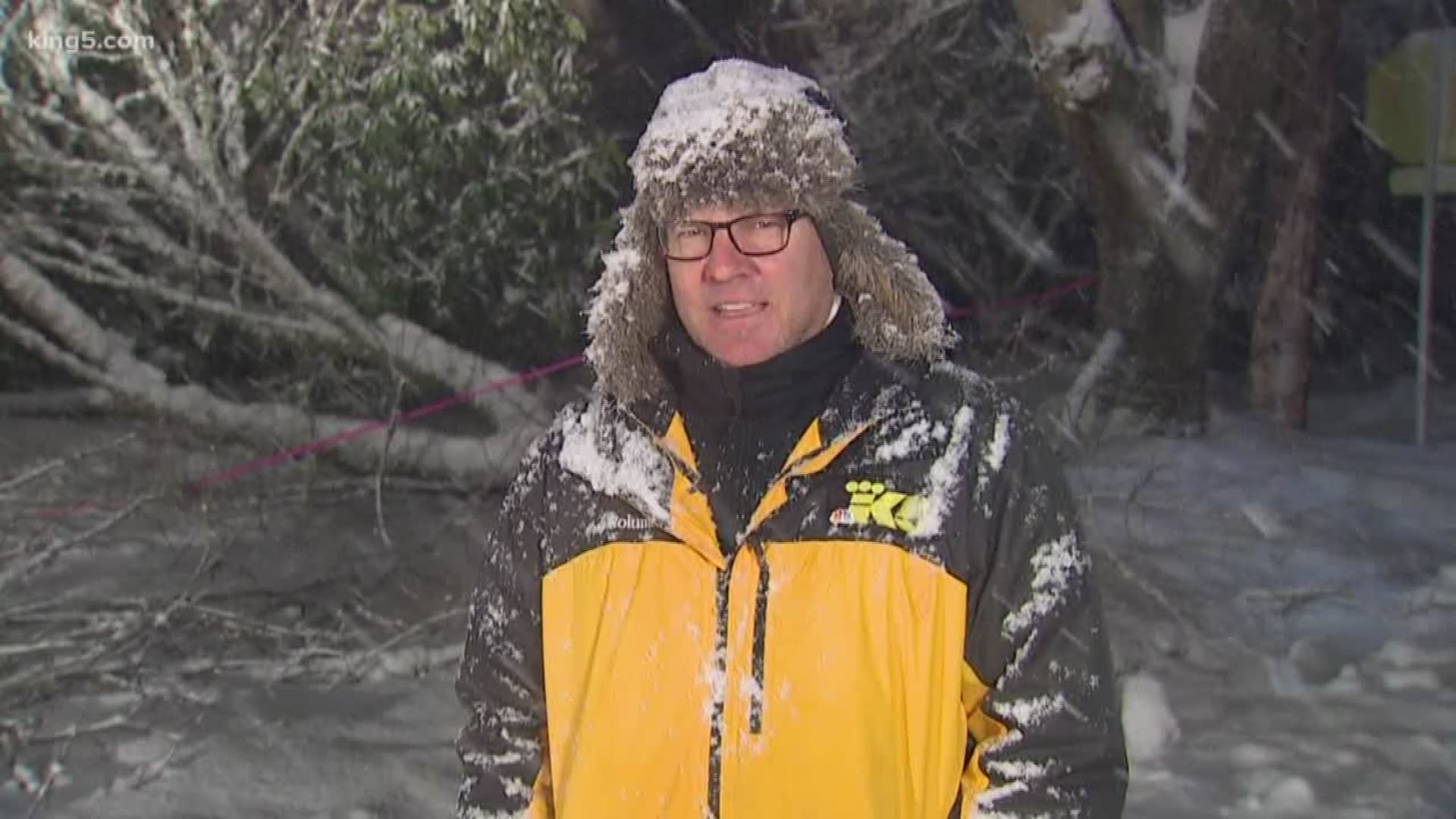There are several post-snowstorm hazards we face in western Washington.
As temperatures rise and snow begins to melt, hazards shift.
Here's a look at a few of the highest concerns for our region:
Roof collapse
Rain added to snow will significantly increase the weight of it. The weight of 1 foot of fresh snow ranges from 3 pounds per square foot for light, dry snow to 21 pounds per square foot for wet, heavy snow, according to FEMA's Snow Load Safety Guide.
Though snow in the western part of the U.S. is typically lighter and less dense than the East Coast, there are exceptions, such as in the Pacific Northwest and Alaska, according to FEMA.
The added weight increases the chance of roof collapse, especially flat roofs.
Landslides
As snow melts, it seeps into soil and increases the threat of landslides.
FEMA warns that landslides most often occurs in the Seattle area after long periods of heavy rainfall or rapid snowmelt. This is especially true for areas with steep slopes.
About 20,000 properties in Seattle alone are in landslide-prone areas, according to the Seattle Department of Construction and Inspections.
Flooding
The combination of rain and melting snow in the lowlands can cause flooding, even in urban areas. Clogged storm drains exacerbate the issue and create areas of standing water.
The National Weather Service warns that excessive runoff from melting snow often causes flooding of creeks and streams.
Standing water can also cause issues on our highways, including under overpasses.
Tree damage
The added weight of wet, heavy snow also takes a toll on trees. Branches may snap off and trees may fall.
It's not uncommon for local jurisdictions to close roads and wooded areas in public spaces to avoid injury.

